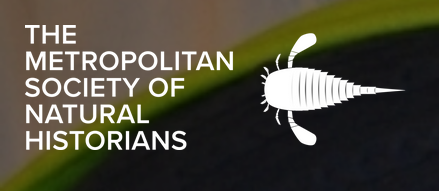On Sunday, March 3, The Metropolitan Society of Natural Historians hosted its 7th Annual Symposium in conjunction with the Science Research Mentoring Program (SRMP) of the American Museum of Natural History (AMNH) in the Linder Theater of the AMNH. The symposium included eight 10-minute talks by scientists from prestigious institutions across across the tri-state area including the American Museum of Natural History, New York Botanical Garden, Princeton University, City University of New York, New York University and Columbia University. More than 80 people attended the event including high school students from SRMP. Presentations focused on ongoing research in a variety of subjects including the evolution of feather iridescence in birds, origins of reptiles and amphibians, forensic entomology, the physiology of coniferous plants in Vietnam, nematode reproduction, nautilus evolution, volcano flow, and sea anemones.
A big thank you to Dr. Maria Strangas, Manager of SRMP and her AMNH Education Department team, including Dr. Alexandria Moore, Crystal Schneider, and Sofia Schembari, for co-hosting the event with us! Funding for conference participation of students in the Science Research Mentoring Program of the American Museum of Natural History is supported by the Doris Duke Charitable Foundation.
To view more photos from this event, visit our gallery. All photo credit goes to Harald Parzer.
A complete list of presenters, talk titles and additional readings/resources recommended by presenters can be found below. To view the full program from this event with talk summaries and bios of presenters, visit here.
The Evolution and Origins of Reptiles and Amphibians
Dr. Phillip Skipwith, Postdoctoral Research Scientist, Richard Gilder Graduate School, American Museum of Natural History, New York, NY
What Worm Tails May Tell Us About Puberty
Dr. Karin Kiontke, Senior Researcher, Department of Biology, New York University, New York, NY
Additional Resources:
Coniferous Conundrums: The Curious Case of a Tropical Conifer
Stephanie Schmiege, Ph.D. Candidate, Columbia University, New York, NY and New York Botanical Garden, Bronx, NY
Nautilus on the Brink of Extinction?: What are they? Where are they born?
Dr. Amane Tajika, Postdoctoral Research Scientist, Division of Paleontology, American Museum of Natural History, New York, NY
Additional Resources:
Crime Scene Inhabitants: Investigating the Use of Dermestid Beetles in Forensic Entomology
Sarah Aliahmad, Master’s Student, City University of New York: John Jay College of Criminal Justice
Studying Volcanic Processes with Crystal Clocks: How Single Crystals Record Magmatic Conditions Deep in the Earth in the Months and Minutes Before Eruption
Henry Towbin, Graduate Student, Lamont-Doherty Earth Observatory, Columbia University, New York, NY
Additional Resources:
Methods used to measure processes occurring deep in volcanic systems
Inclusions trapped within volcanic crystals
Student Research in Dr. Terry Plank’s Lab at The Lamont Doherty Earth Observatory
Diversity of Iridescent Structural Colors in Modern and Fossil Birds
Klara Norden, Ph.D. Candidate, Department of Biology, Princeton University, Princeton, NJ
Additional Resources:
Melanosome diversity in iridescent feathers (open-access article)
Reconstruction of Microraptor and the evolution of iridescent plumage
Anything But Simple: The Evolution of Burrowing Sea Anemones
Dr. Luciana Gusmão, Postdoctoral Research Scientist, Division of Invertebrate Zoology, American Museum of Natural History, New York, NY
Additional Resources:
Deep Sea News - Website featuring latest resarch on life in the deep sea









